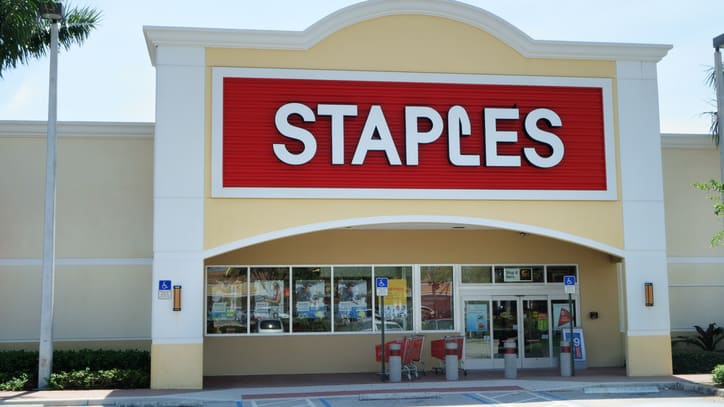The No. 1 reason employees leave office supplier Staples is lack of career mobility, according to the company's head of talent acquisition and workforce planning.
"They are saying that there is a lack of opportunities at Staples," said Lisa Pueschel during the recent SmashFly Transform Virtual conference for recruitment marketing. "We hired 30,000 people last year, so I know the opportunities are here. The problem is that we are not connecting people to the opportunities."
Pueschel believes that most companies—especially larger ones—don't do a good job building the processes that encourage internal mobility. "Careers websites alone are not enough," she said. "They show open jobs, but they don't show employees what the opportunities are that fit their skills and experience."
And if an employee's professional interest lies outside his or her department, it's especially difficult to make a move, she said.
[SHRM members-only toolkit: Performing Job Evaluations]
Another obstacle is managers who are not willing to give up hard workers to internal promotions. "I call it talent hoarding," she said. "But given the challenges employers have finding top talent, I can't really blame them. I don't think managers are holding people back because they don't want them to grow their careers. They are holding people back because they are fearful of having a gaping hole in their organization for 30 or 60 or 90 days."
Pueschel wants every manager to take responsibility for sharing talent around the organization. "We talk about the concept of talent exporting. If you have great talent, you have got to share that talent. Conversely, we believe that we need to encourage people to be great talent importers."
She said Staples recruiters are responsible for identifying eligible employees for every open role. But hurdles persist. "Here's how it goes sometimes," she said. "Recruiters bring up some internal names. Hiring managers are receptive. They say, 'Yes, I'd love to see that person, but I also want to see two or three external people.' We need to stop that. If we have great internal talent, let's move them to grow their careers."
High-potential employees will be open to options and will leave anyway, whether it's for an internal role or another employer, she stressed. "They've got recruiters calling them, offering them opportunities and engaging with them in career discussions. But people aren't necessarily looking to leave their companies, just their jobs. People want new opportunities to learn, to grow and to drive value."
Build Mobility into the Culture
Pueschel said Staples is focused on three key elements that support internal mobility at the company: stakeholder buy-in, a proactive process and career path visibility.
Buy-in from leadership and especially from hiring managers could be the hardest thing to overcome when deciding to champion internal mobility, she said.
"At Staples, our senior leadership team is engaged in the discussions and understands the need to move people internally. But when you get down to that hiring manager who needs to give up that talent, that is when it gets more challenging."
She noted that implementing a candidate relationship management tool to create a pipeline of talent with ready candidates is one way to help managers feel comfortable encouraging mobility.
Creating processes to support mobility, including development of high-potentials and rigorous talent management, is also key, she said. Run-of-the-mill succession planning is not enough. Beginning last year, when Staples recruiters started contacting internal employees with the skills needed for an open job, "it was not popular with hiring managers," she said. "I got phone calls accusing me of stealing their people."
Contacted employees were surprised, but then appreciative, that they were being considered, Pueschel said. About one-third of them applied for the job.
"Another interesting thing that happened was that even when an employee was not interested, they knew a colleague who was," she added.
Career path visibility is necessary to change employees' perceptions about the opportunities at a company. Staples is using an internal career platform that matches employees' skills and capabilities with potential opportunities—not just the roles that are open on a given day. The technology uses machine learning to understand what each employee is interested in over time.
"Associates can also see who is in the current role and are able to connect and engage with those people."
The company's goals are to fill more positions from within than externally at the higher levels and to bring in new people from outside to fill junior roles. Pueschel gets especially excited when an internal move up top starts a chain reaction of moves down the organizational chart.
"It's a win for everyone when employees can stay within the company and grow their careers," she said. And she knows of what she speaks, being a successful product of internal mobility herself. Pueschel has had "eight or nine jobs" during her 18-year career at Staples.




